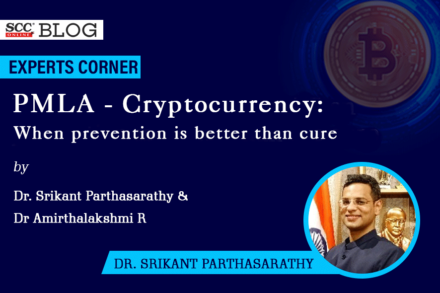The Government brought the trading in the cryptocurrency under the ambit of the Prevention of Money-Laundering Act, 2002 (PMLA). This essentially classifies this under the same ambit as illegal arms, gambling, terrorism, and narcotics amongst many illegal acts. The interesting aspect about the Money-Laundering Act is that the illegal act may be covered by a separate legislation, however, investigation could be extended into the PMLA, which is rigorous, non bailable and have mandatory sentence.
The extension to the cryptocurrency is laudable, however, the extent to which the preventive measures, which are envisaged by the PMLA Act, can result in effective deterrence to the trading of the cryptocurrency is yet to be seen. There is a reason why the clampdown has started at the PMLA. The PMLA is a special legislation which provides for not only punishing the crime, the criminal but also the accessories to the crime to various degrees. By various degrees, we mean, the one who has used the proceeds of a crime knowingly or unknowingly. This is how Section 3 PMLA is structured stating “whoever directly or indirectly attempts to indulge or knowingly assists or knowingly is a party…”, which gives a wide ambit to the investigative agencies to trace and attach the proceeds of a crime. The counterfeit luxury products, which flood the market. If a person is directly or indirectly dealing with a counterfeit product, the proceeds of which are being used for the “scheduled offences” of the PMLA, is an accessory to the crime and their purchase, however legitimate their income may be, could be attached.
PMLA is an investigation equivalent of the blindfolded lady of justice with a sword and a balance. However, it has its own lacuna. The very same section i.e., Section 3 PMLA states “… proceeds of crime including its concealment, possession, acquisition or use and projecting or claiming it as untainted property”. This is exactly where the crypto world would be difficult to map. To understand cryptocurrency, one has to look at the component of “consideration” for a transaction. In real world, it is fiat or money, however in the crypto world, it is an underlying code. Difficult as it is to interpret, who is the owner and the untraceable nature of the transaction itself, the PMLA has effectively laid siege on the walls that protect the crypto world. A crypto world cannot exist in silo and has to meet the real fiat/currency as a medium of exchange, which is where the PMLA steps in and makes the exchange of fiat to a crypto, a tainted transaction and thereby a tainted property. However, the surgical strike on the cryptocurrency may not necessarily result in the deterrence. For long, the Reserve Bank of India has been maintaining that cryptocurrency poses a risk to the stability of a nation and its sovereignty. This was seen through the cases built against major crypto trading companies situated in India and its statements equating “crypto” to “Ponzi scheme”.
Bringing this under the ambit of PMLA makes it onerous on the person who has unknowingly participated in the crypto market, which could be through entrusting it to a friend or a fund manager or a trading house, etc. Since the crypto assets are now tainted property, both the Enforcement Directorate (ED) as well as the unknown public are going to be in the wilderness. Tracing and prosecuting trading houses has had its own statistical nightmare. The data released by the Enforcement Directorate as on 31-3-2022 shows – INR 1,04,702 crores which has been attached by the ED, cases recorded for investigation–5422, making it an average of ~20 crores per investigation. Now corresponding it with the number of persons arrested – 400, makes the charge of offence against per person stand at an average of ~INR 262 crores. The number gets stranger as one drills down to the number of persons convicted – 25, which brings the average value of assets attached per convict to ~ 4200 crores.
In other words, the ED is great at bringing assets under its investigation ambit, but the numbers speak for themselves for the acquittals made by the ED, which is value that is attached with the ED without seeing the light of the day of the non-convict – the number which stands at ~276 crores per charge-sheet, making it the most expensive charge-sheet by any investigative agency.
The inclusion of the cryptocurrency is bound to increase this number, the question before the ED is whether it can balance the interest of the unknowing public who may have indirectly invested in cryptocurrency versus its own strength to explore the crypto market and unearth the complexities.
† Professor of International Law and an alumnus of The Hague Academy, Netherlands. Author can be reached at casrikantparth@gmail.com.
†† Principal Counsel, Chambers of Dr. Srikant Parthasarathy








thank you providing best information about crypto